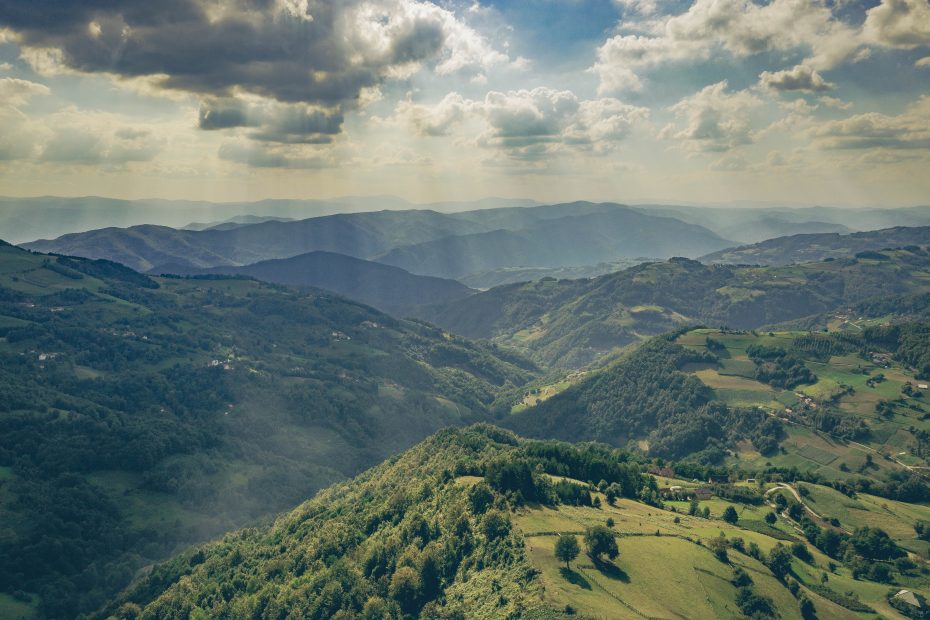Introduction
With a long and complex religious history, Serbia contains a tapestry of sacred sites and religious architecture. From ornate Orthodox monasteries to imposing mosques, these spiritual places offer insight into the country’s past and a profoundly moving experience for visitors today.
Serbia’s Long Religious History
Situated at the crossroads of the Eastern and Western Roman empires, medieval Serbia was influenced by both Orthodox Christianity and Catholicism. The Ottomans later brought Islam when they conquered Serbia in the 14th century. This blending of diverse faiths led to a proliferation of houses of worship across the Serbian landscape.
Major Religions in Serbia
Table of Contents
Orthodox Christianity
Orthodoxy has been central to Serbian identity since the country’s inception. It remains the dominant religion, with adherents comprising 84% of the population. Richly decorated churches and isolated mountainside monasteries are testament to Orthodoxy’s deep roots here.
Catholic Christianity
Introduced when Serbia was part of the Austro-Hungarian empire, Catholicism left its mark in Vojvodina province. The ornate cathedrals found here reflect the Baroque architectural style of Western Europe.
Islam
Islam arrived during the 500-year Ottoman occupation and persists as the third largest religion. Impressive mosques can be visited in Novi Pazar, Belgrade, and southern Serbia.
Famous Orthodox Monasteries and Churches
Studenica Monastery
Nestled in southwestern Serbia’s mountains, the 12th century Studenica Monastery is one of the country’s most sacred Orthodox sites. Its white marble Byzantine church and intricate frescoes earned it UNESCO World Heritage status.
Mileševa Monastery
Renowned for its 13th century White Angel fresco, Mileševa Monastery is situated on the banks of the Mileševka River. Despite damage over the centuries, its artwork remains a stunning exemplar of medieval painting.
Žiča Monastery
Žiča Monastery near Kraljevo was the coronation place and burial site of medieval Serbian kings. Its 13th century Church of the Ascension features frescoes depicting Christ’s life.
Sopoćani Monastery
The monks of Sopoćani toiled for decades on the monastery’s exquisite frescoes. Dating to the 13th century, they exhibit masterful artistry in their vivid hues and graceful figures.
Saint Sava Cathedral
Dominating Belgrade’s skyline is the massive Saint Sava Cathedral, dedicated to the founder of the Serbian Orthodox Church. Its cavernous nave and glittering chandeliers create a breathtaking atmosphere.
Notable Catholic Sites
Subotica Cathedral
Subotica Cathedral in northern Serbia fuses Hungarian Art Nouveau and southern European Baroque styles. Its vividly painted interior is considered one of the most beautiful churches in the region.
Đakovo Cathedral
The centerpiece of Đakovo is its 19th century crimson-hued cathedral modeled after St. Peter’s Basilica in Rome. Frescoes by famous Croatian painters adorn the ceiling, drawing the gaze heavenward.
Islamic Architecture
Bajrakli Mosque
One of the oldest surviving mosques in Serbia, the early 16th century Bajrakli Mosque lies in Belgrade’s old town. Ottoman and Austrian influences blend in its tranquil courtyard and striking minaret.
Gazi Husrev-beg Mosque
A stunning example of classical Ottoman architecture, this 16th century Sarajevo mosque was commissioned by the eponymous Ottoman governor. Its vast domed prayer hall can hold over 1,000 worshippers.
Spiritual Significance of these Sites
More than just tourist attractions, Serbia’s sacred places hold deep meaning for devotees. Their ancient rites, saintly relics, and holy imagery have offered spiritual sustenance to generations. Even visitors with little religious belief can find beauty, wonder, and a sense of the divine within these hallowed sanctuaries.
Visiting the Sacred Sites: Planning Your Trip
When to Visit
Spring and fall offer moderate weather and fewer crowds. Summers get quite hot, though festivals at monasteries occur during this season. Winters can be bitterly cold, with some sites closed or having limited hours.
Getting Around
Buses link most key sites, but having a rental car allows flexibility. Guided tours take you directly to the main attractions. Staying at monasteries provides full immersion but require planning around their strict schedules.
Top Tips
Attire covering knees and shoulders is required at religious buildings, so dress modestly. Photography is usually permitted but no flash. Visit early or late in the day to avoid crowds. Be respectful by keeping noise down and not entering during worship services.
Conclusion
A journey through Serbia’s sacred monuments offers intimate encounters with its multifaceted spiritual heritage. Both eye-opening and transformative, it allows you to weave your way through the rich tapestry of faiths that have shaped this captivating country. As their exquisite architecture and art transports you across the centuries, take time to reflect upon their resonance through the ages and relevance for us today.
FAQs
What is the main religion in Serbia?
The main religion is Orthodox Christianity, with adherents comprising 84% of the population. The Serbian Orthodox Church played a pivotal role in Serbia’s cultural and national identity through its long history.
Which Serbian monastery has the most famous frescoes?
Studenica Monastery is renowned for its exquisite and well-preserved 13th century Byzantine frescoes, including the acclaimed “Ascension of Christ.” It earned UNESCO World Heritage status thanks to this precious artwork.
What is the biggest Orthodox church in Serbia?
Saint Sava Cathedral in Belgrade is one of the largest Orthodox churches in the world. Construction started in the 19th century on this massive cathedral dedicated to Saint Sava, founder of the Serbian Orthodox Church.
What is the most impressive mosque in Serbia?
Built in 1575, the Gazi Husrev-beg Mosque in Sarajevo is considered the finest example of classical Ottoman architecture in Serbia. Its huge dome, towering minaret, and ornately decorated interior are breathtaking to behold.
Which cathedral showcases Art Nouveau and Baroque styles?
Subotica Cathedral in northern Serbia uniquely blends southern European Baroque with elaborate Hungarian Art Nouveau style. Its interior dazzles with painted walls, stained glass windows, and lavish altars.
